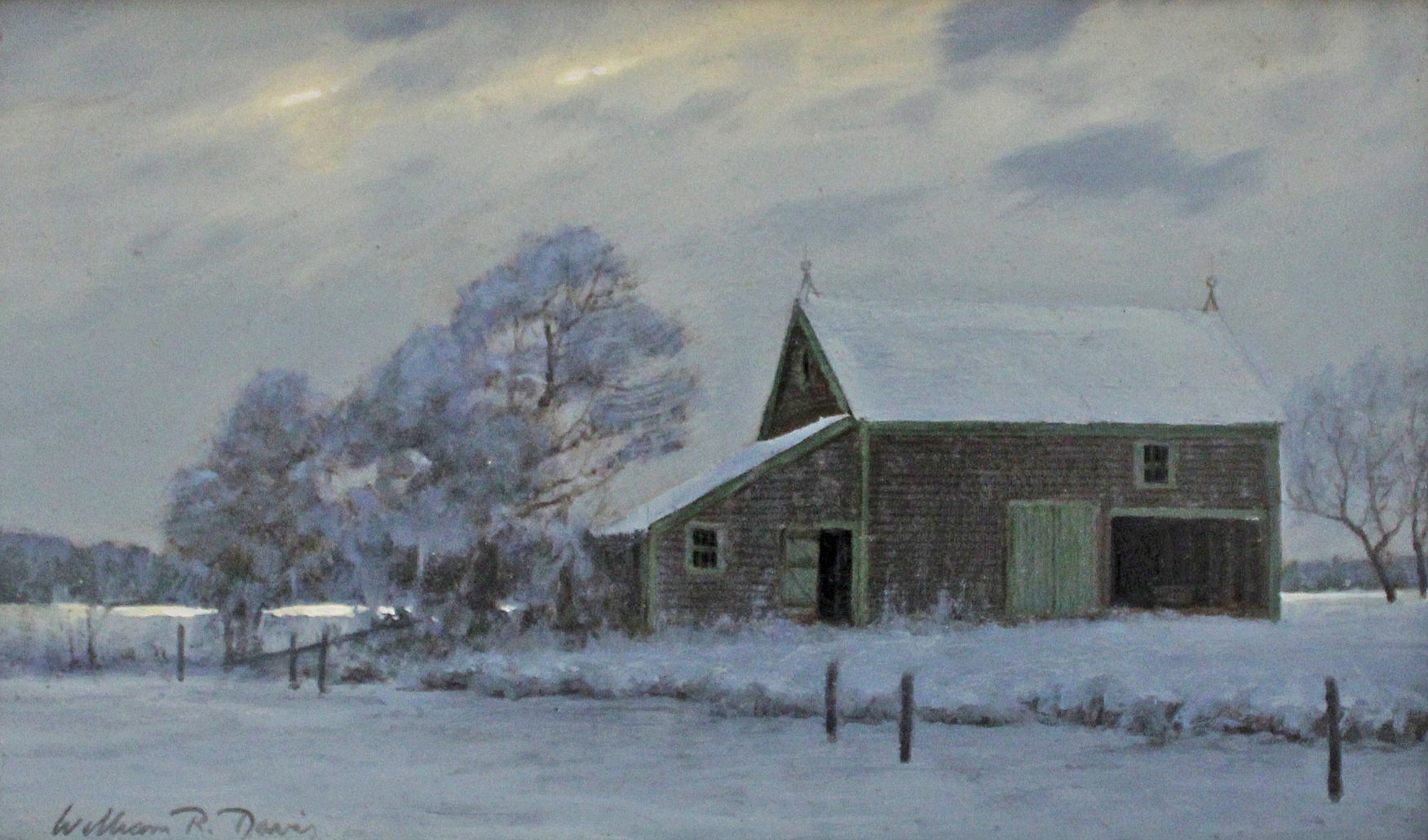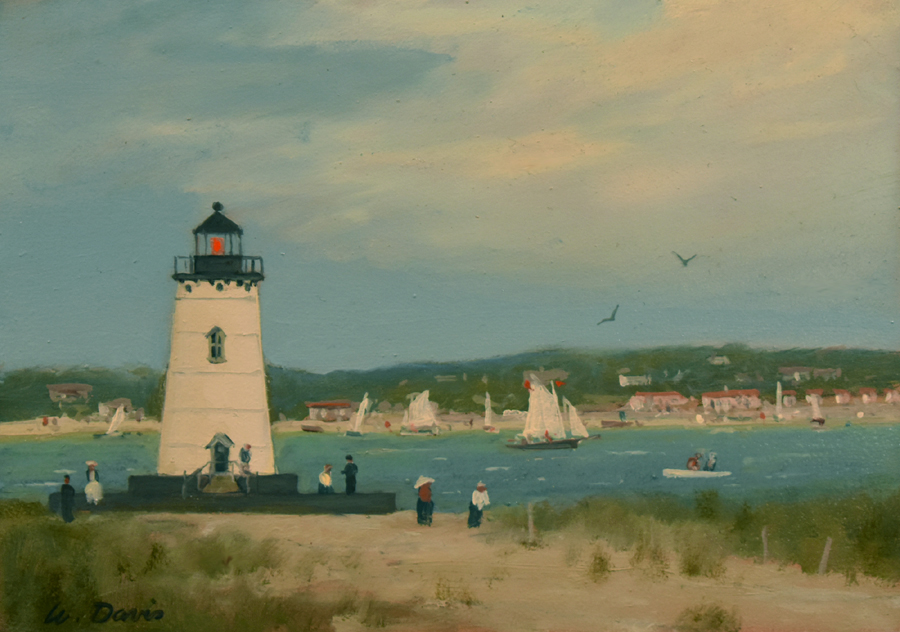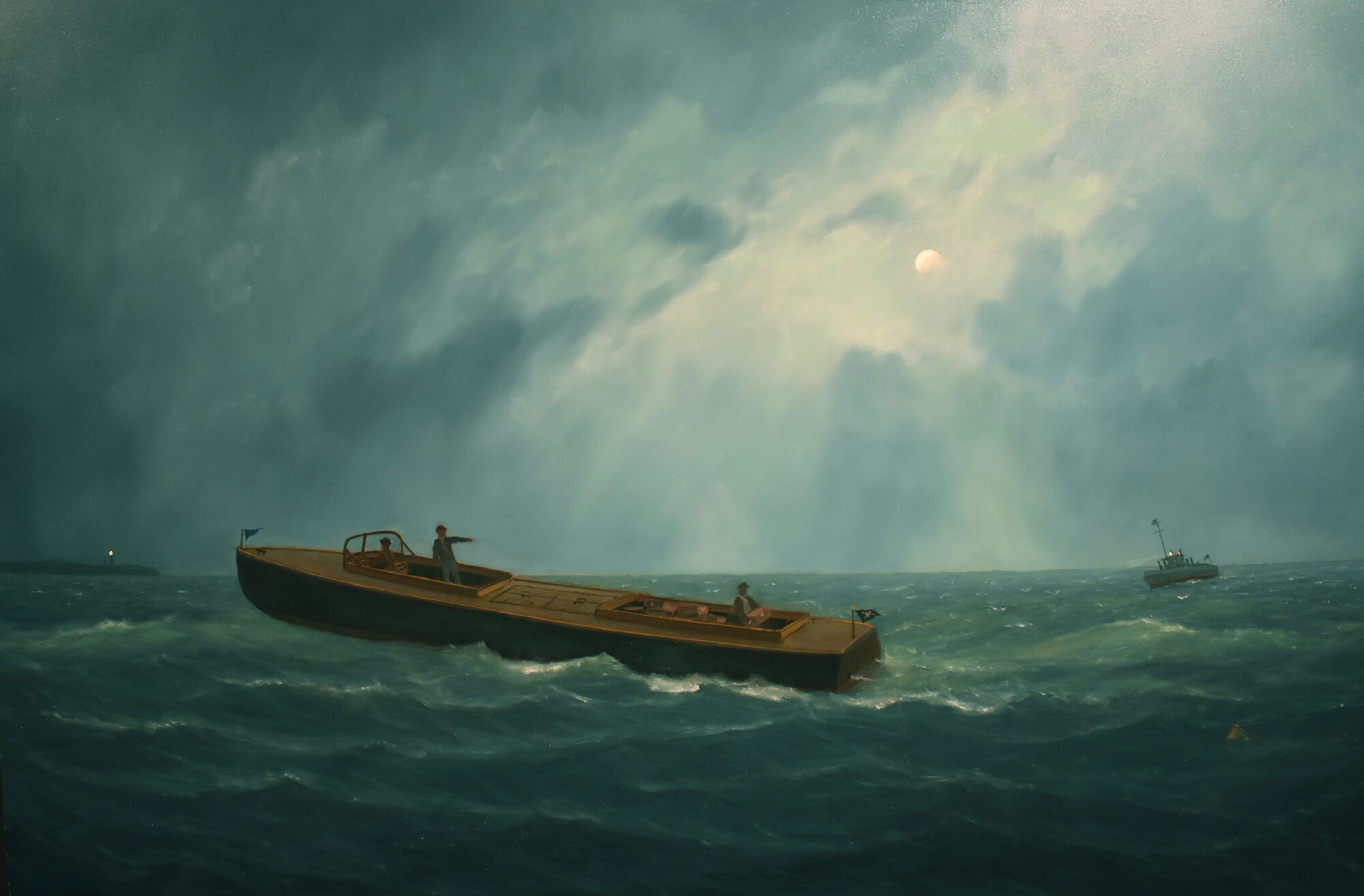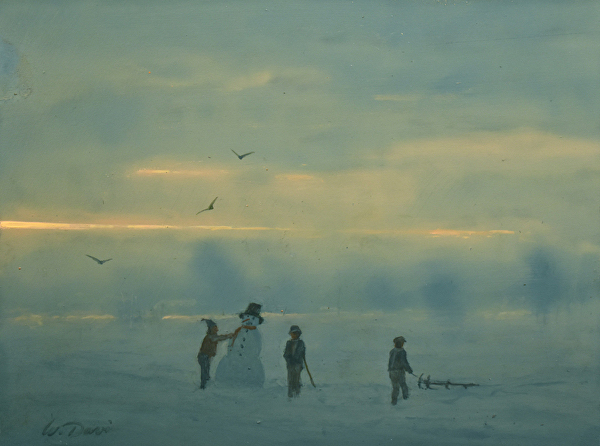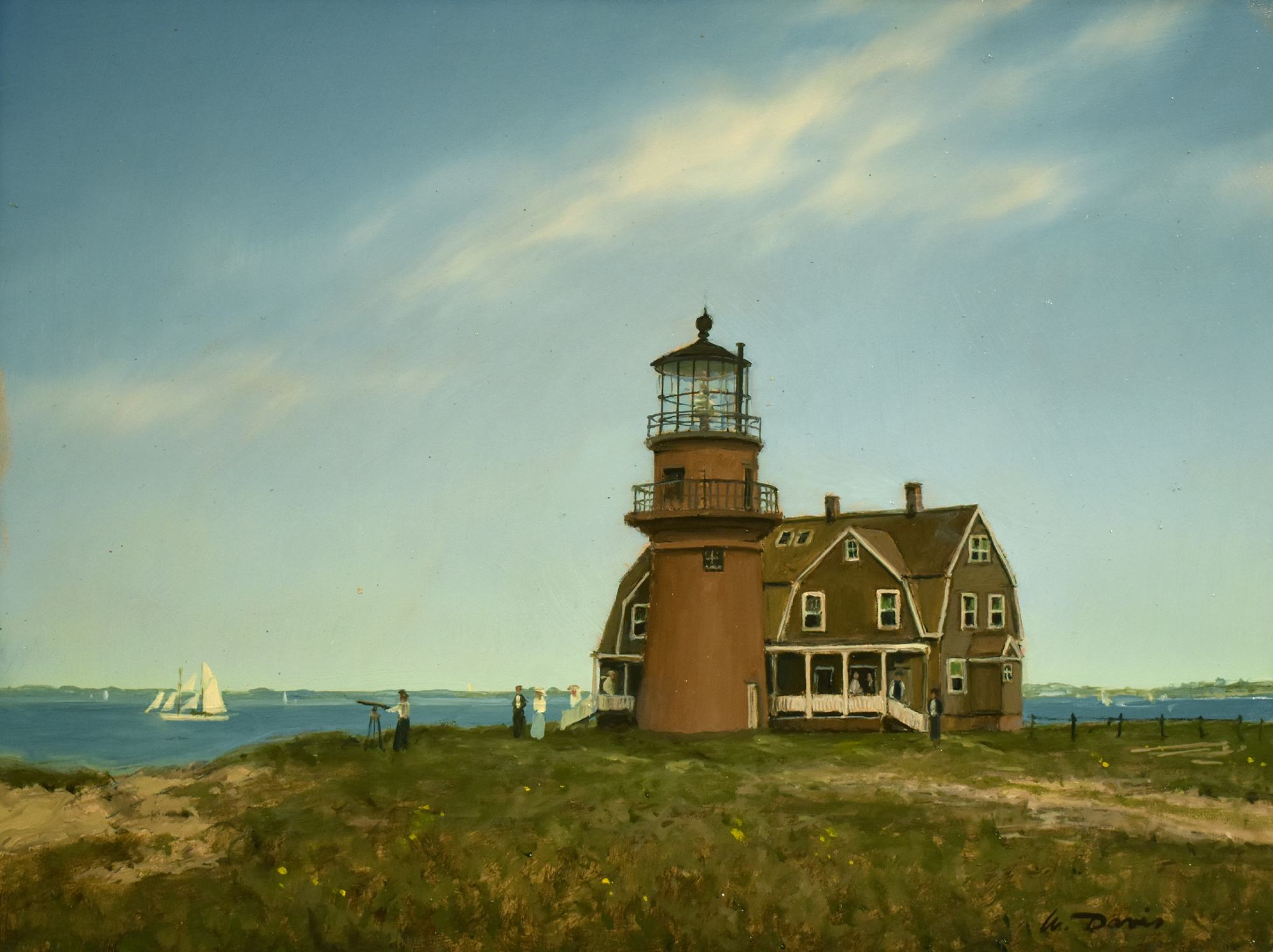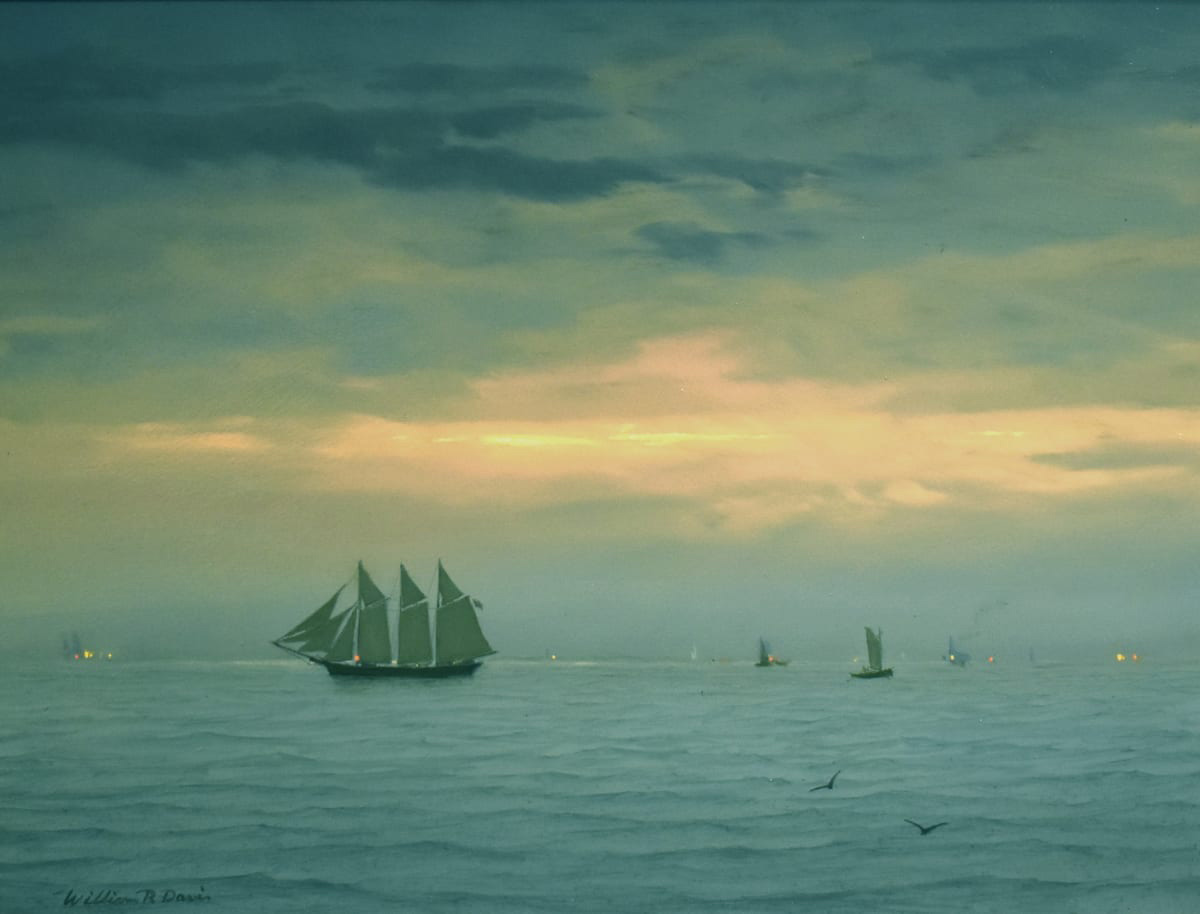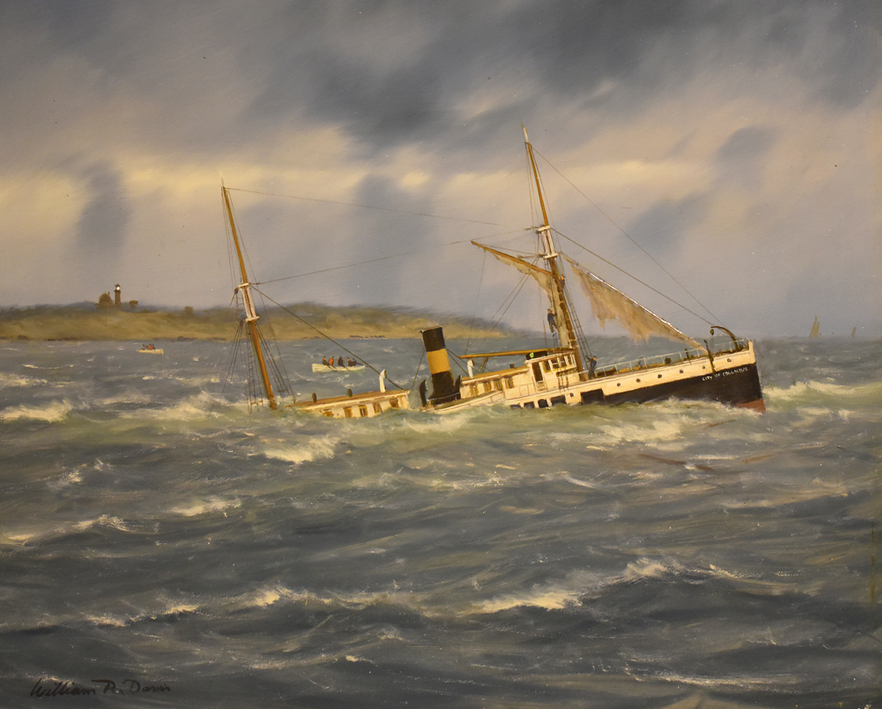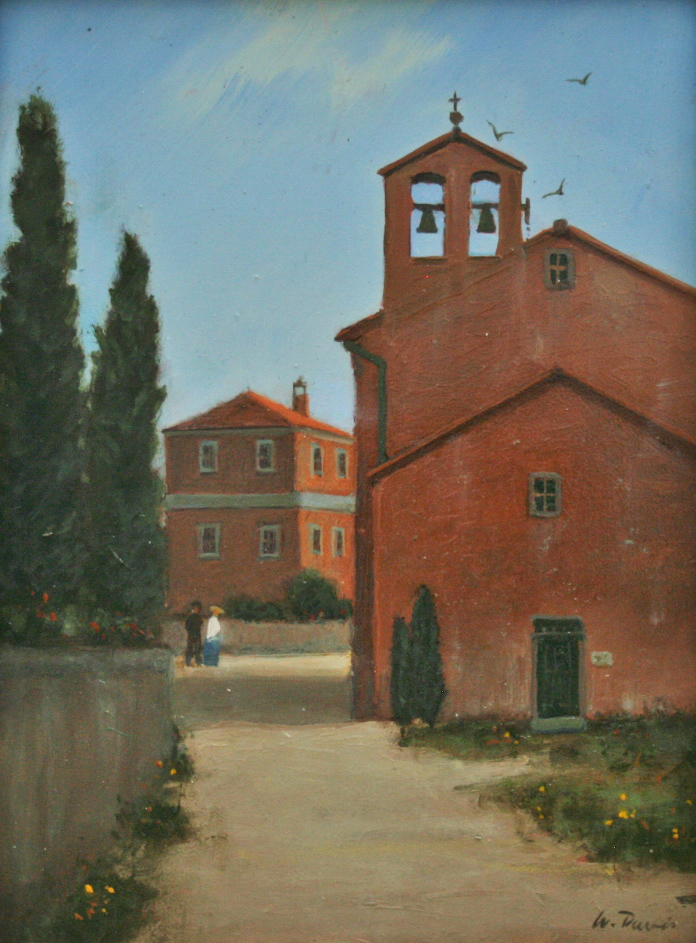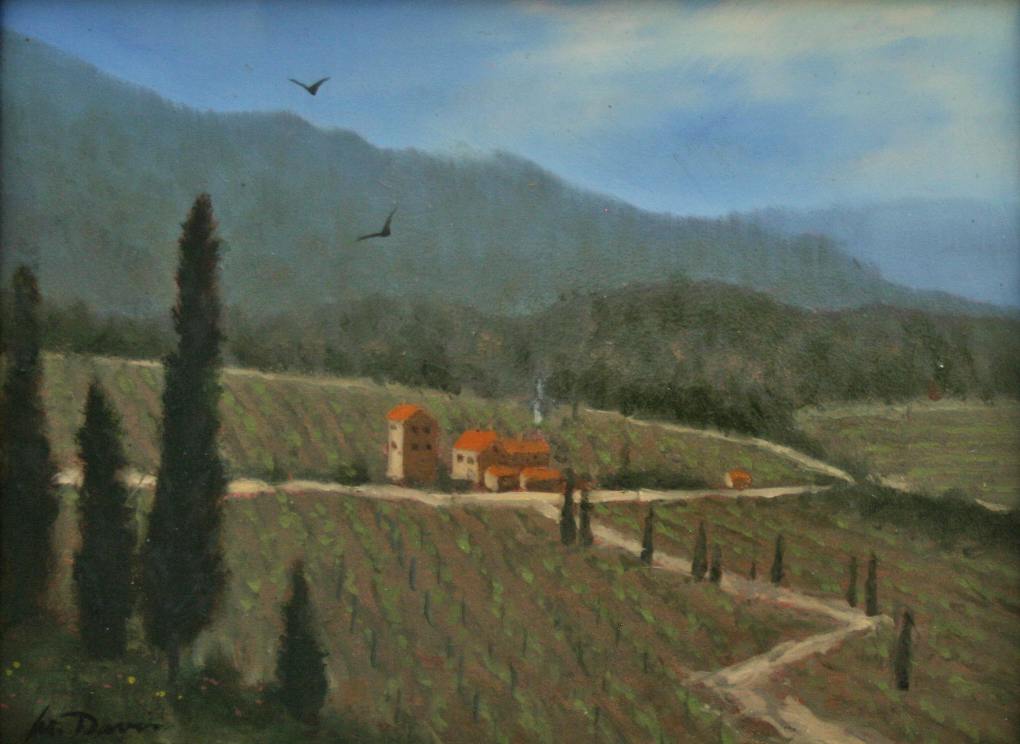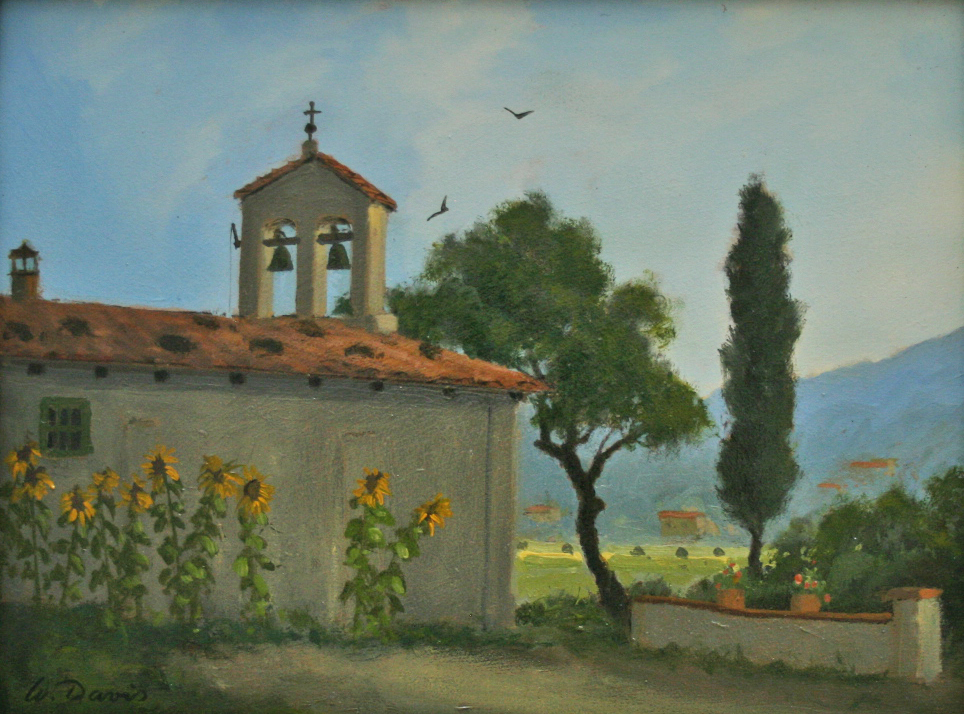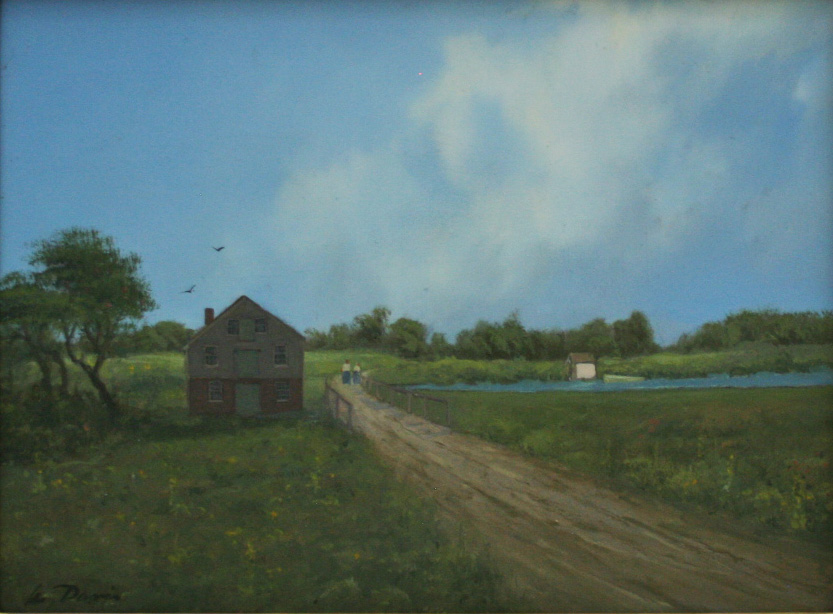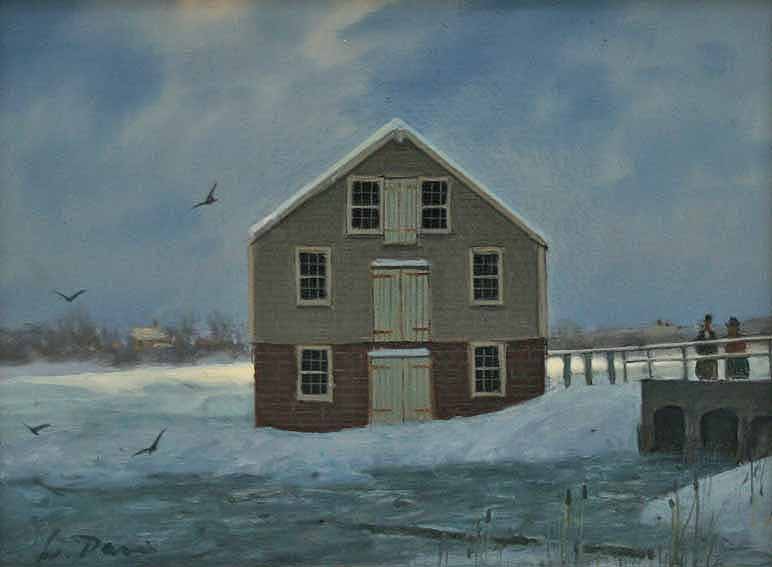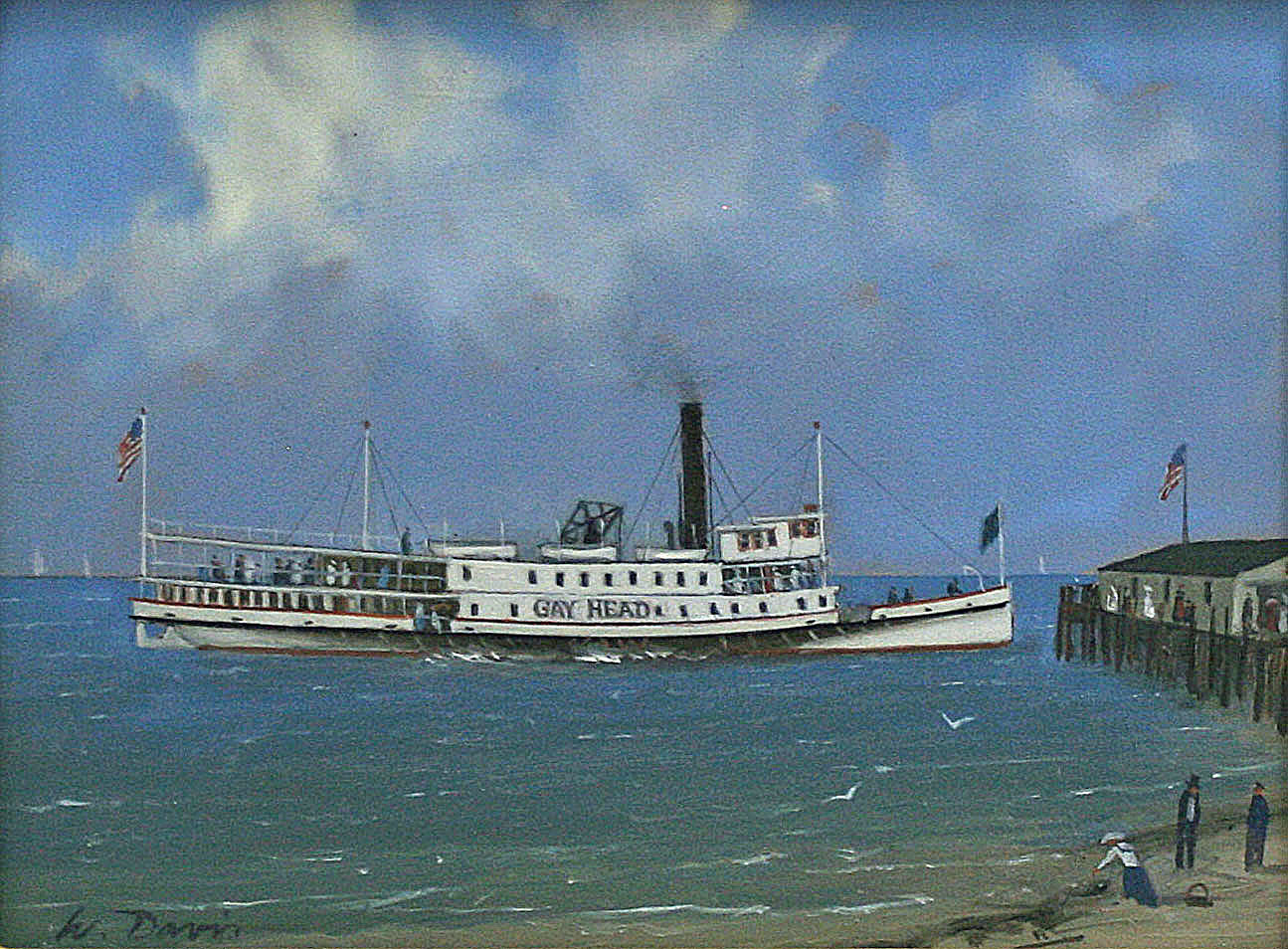William Davis’ work is firmly rooted in the realist tradition and he credits both the Hudson River School painters (of which he is often considered a descendant) and the Tonalists of the late 19th century as strong influences. “I have a kindred feeling to those painters, the same outlook,” he says. “They wanted to show off the beauty. They would argue whether to put man in or not. I like to put man back in, make the figures really small and insignificant. It makes nature seem huge by showing how small we really are.”
Bill Davis has spent his life around boats. “I’ve always had an interest in the maritime,” he says. “Even as a little kid, I was drawing steamboats.” As a child, he began taking lessons at the Hyannisport Yacht Club. Later on in the 1980’s Davis began painting his way around Hyannis Harbor. “I had a pretty good feel about all the boats in the harbor, so that was what I started with, the Beetle cats and such. I think I painted everyone’s boat!”
Since then, Davis has steadily built a sterling reputation, broadening his range along the way. He has shown marine and landscape paintings around New England and the country.
Davis’ work is firmly rooted in the realist tradition and he credits both the Hudson River School painters (of which he is often considered a descendant) and the Tonalists of the late 19th century as strong influences. “I have a kindred feeling to those painters, the same outlook,” he says. “They wanted to show off the beauty. They would argue whether to put man in or not. I like to put man back in, make the figures really small and insignificant. It makes nature seem huge by showing how small we really are.”
Davis’ discovery of painting happened slowly. After school, he first followed his father into the construction trade. While it gave him a foundation in the pragmatic details of running business, it left him intellectually unsatisfied. “I couldn’t envision myself doing it forever,” he says. “I didn’t mind it and I worked hard, but I just thought, ‘Is this it?’ My mind needed more challenge.” During this part of his life, Davis would work during the day and paint at night.
Entirely self-taught, Davis’ teachers were the works of artists he admired; his textbooks were the 19th century paintings that he collected. He developed his skills through close study, observation and trial and error. He limits himself to about 30 colors in the palette of that period. He describes his style as “a conglomerate of a number of ideas I saw in other artists with my own refinements.”
During the 1990’s, Davis shifted to painting landscapes on location. In this process, he has converted to plein air painting, partly influenced by his friendship with artists Joseph McGurl and Donald Demers. During 1998, the three friends painted together in various locations throughout New England. The result of their effort was a show entitled, The New American Luminists Revisit the Native Landscapes, held on Cape Cod. The three artists were also invited to paint Yosemite National Park.
In the spring of 2004, Davis was one of fifty selected artists from different regions of the United States to contribute to the exhibit From Sea to Shining Sea: A Reflection of America. The show was held at The Haggin Museum in Stockton, CA, and the paintings focused on life in America.
After 30 years, Davis is still inspired by the intellectual challenge that painting provides. “I never get bored and I feel like my quality has increased. Now I can sit down and do a painting that a few years ago would have been really difficult for me,” he says. In his current work, Davis balances plein air painting with his studio practice. Whether historical maritime paintings or traditional landscapes, his studio works almost always spring from his vivid imagination. As idealized visions, Davis’ paintings capture another century and another time – one without power lines, speed boats or electric lights. An appreciation for another world is alive in the artist himself – and his splendid paintings could pass as 19th century masterpieces.

